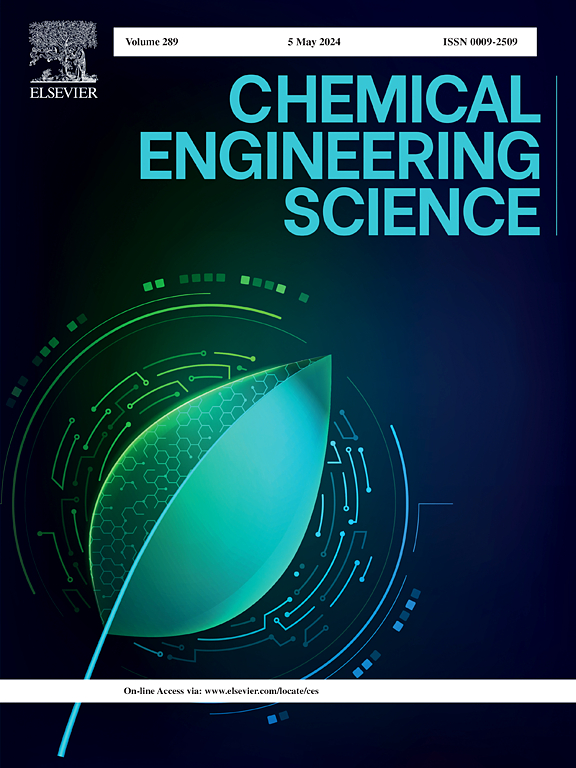Investigation of scaling criteria and multiscale experiments for hydrate-based CO2 sequestration in marine sediment and depleted NGH reservoir via CO2/N2 injection
IF 4.1
2区 工程技术
Q2 ENGINEERING, CHEMICAL
引用次数: 0
Abstract
To analyze the potential of hydrate-based CO2 sequestration as a strategy for carbon removal, this study establishes scaling criteria for hydrate formation in marine sediments and depleted natural gas hydrate (NGH) reservoirs based on models describing hydrate formation kinetics, heat transfer, and diffusion, predicting the CO2 storage capacity and efficiency at field-scale. The mixed hydrate formation experiments via CO2/N2 injection were simulated using small-scale (V = 0.14 L) and pilot-scale (V = 22.0 L) reactors, verifying similarity and modifying the scaling criteria. Heterogeneity in hydrate growth within sediments was observed under different injection strategies, temperature–pressure, and residual gas scenarios. Field-scale predictions show that marine sediments (H, L = 100 m) in the Shenhu region of the South China Sea (P = 12.4 MPa, T = 278.2 K), can store 9120 tons of CO2 in hydrate, reaching hydrate saturation (sh) = 15 % in 2273.84 days. In depleted NGH reservoirs (H, L = 100 m) at the SHSC-4 site, (P = 14.5 MPa, T = 285.2 K), 5140 tons of CO2 can be stored, with 4191.07 days to reach sh = 15 %. The findings contribute to the understanding of field-scale hydrate formation kinetics in sediments, supporting the development of regional carbon removal.

海洋沉积物和枯竭天然气水合物储层注CO2/N2水合物固碳结垢标准及多尺度实验研究
为了分析基于水合物的二氧化碳封存作为碳去除策略的潜力,本研究基于描述水合物形成动力学、传热和扩散的模型,建立了海洋沉积物和枯竭天然气水合物(NGH)储层中水合物形成的标度标准,并预测了油田规模的二氧化碳储存能力和效率。采用小规模反应器(V = 0.14 L)和中试反应器(V = 22.0 L)模拟CO2/N2注入混合水合物实验,验证相似度并修改标度标准。在不同的注入策略、温度压力和残余气体情况下,观察了沉积物中水合物生长的非均质性。油田规模的预测表明,海洋沉积物(H、L = 100 米)Shenhu地区的南中国海(P = 12.4 MPa, 278.2 T = K),可以储存9120吨二氧化碳水合物,达到水合物饱和度(sh) = 15 % 2273.84天。在枯竭已水库(H、L = 100 米)SHSC-4网站,(P = 14.5 MPa, 285.2 T = K), 5140吨的二氧化碳可以存储,4191.07 天到达sh = 15 %。这些发现有助于了解沉积物中现场尺度的水合物形成动力学,支持区域碳去除的发展。
本文章由计算机程序翻译,如有差异,请以英文原文为准。
求助全文
约1分钟内获得全文
求助全文
来源期刊

Chemical Engineering Science
工程技术-工程:化工
CiteScore
7.50
自引率
8.50%
发文量
1025
审稿时长
50 days
期刊介绍:
Chemical engineering enables the transformation of natural resources and energy into useful products for society. It draws on and applies natural sciences, mathematics and economics, and has developed fundamental engineering science that underpins the discipline.
Chemical Engineering Science (CES) has been publishing papers on the fundamentals of chemical engineering since 1951. CES is the platform where the most significant advances in the discipline have ever since been published. Chemical Engineering Science has accompanied and sustained chemical engineering through its development into the vibrant and broad scientific discipline it is today.
 求助内容:
求助内容: 应助结果提醒方式:
应助结果提醒方式:


